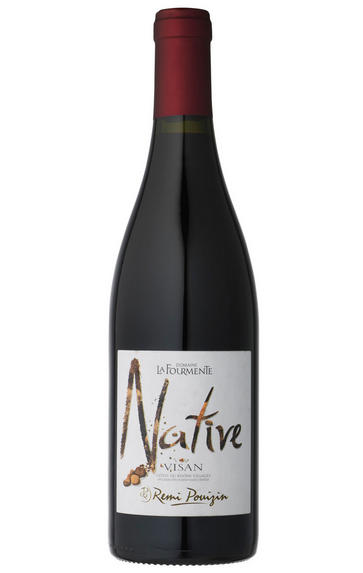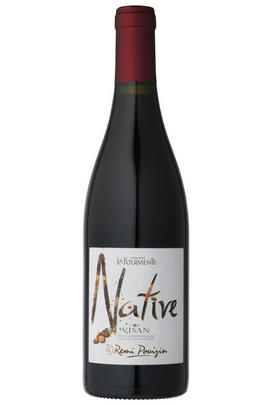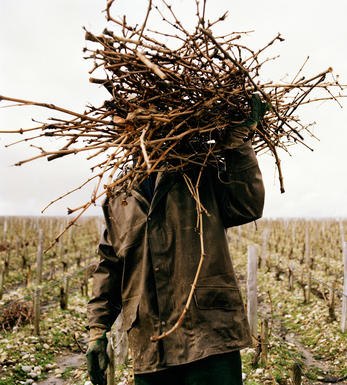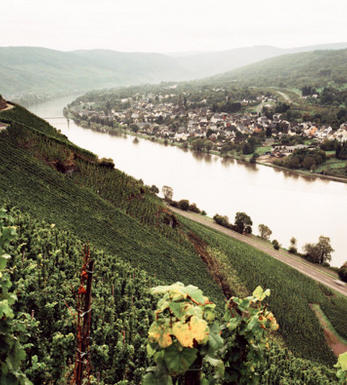
2011 Côtes du Rhône Villages, Visan, Garrigue, Domaine la Fourmente

About this WINE

Domaine la Fourmente
Visan is one of the more self-effacing of the Côtes du Rhône Villages, not clamouring self-righteously for standalone appellation status, and therefore less well-known than near neighbours such as Rasteau and Vacqueyras. Despite this, the wines can be excellent.
Domaine Fourmente, which was founded in 1922, farms 50 hectares and is certified as biodynamic. For vigneron Rémi Pouzin, the key Visan words are finesse and fruit. Lavender cultivation is also a speciality here; its perfumes pervade the wines with dreamy eloquence.

Côtes du Rhône Villages
A clear step up from basic Côtes du Rhône in terms of both quality and price, the Côtes du Rhône Villages appellation covers an area of 5,700 hectares entirely within the Southern Rhône. About 15 percent of the size of its generic counterpart, it offers mostly excellent, very good value wines from all three hues that are more serious, concentrated and interesting.
Red wines dominate, made up of a minimum 50 percent Grenache, at least 20 percent Syrah and Mourvèdre, and no more than 20 percent from 10 other named varieties. Out of 95 communes that are eligible to use the Villages name, the finest 18 of them have the right to append their village name, as long as the wine is exclusively from that commune. The classification is quite fluid though, with Gigondas, Vacqueyras, and Beaumes de Venise and Vinsobres and Rasteau having been upgraded to AOC status, and other villages like Massif d’Uchaux and Plan de Dieu being added.
Best enjoyed from two to 10 years of age, the best wines probably come from Cairanne and Sablet, but all are well worth a look. The whites are rapidly improving and are delicious in their first three years. Rosé wines are made from the same cépage as the reds and are usually very good.
Recommended Producers: Chapoton, Domaine Cros de la Mûre, La Soumade

Southern Rhône Blend
The vast majority of wines from the Southern Rhône are blends. There are 5 main black varieties, although others are used and the most famous wine of the region, Châteauneuf du Pape, can be made from as many as 13 different varieties. Grenache is the most important grape in the southern Rhône - it contributes alcohol, warmth and gentle juicy fruit and is an ideal base wine in the blend. Plantings of Syrah in the southern Rhône have risen dramatically in the last decade and it is an increasingly important component in blends. It rarely attains the heights that it does in the North but adds colour, backbone, tannins and soft ripe fruit to the blend.
The much-maligned Carignan has been on the retreat recently but is still included in many blends - the best old vines can add colour, body and spicy fruits. Cinsault is also backtracking but, if yields are restricted, can produce moderately well-coloured wines adding pleasant-light fruit to red and rosé blends. Finally, Mourvèdre, a grape from Bandol on the Mediterranean coast, has recently become an increasingly significant component of Southern Rhône blends - it often struggles to ripen fully but can add acidity, ripe spicy berry fruits and hints of tobacco to blends.


Buying options
Add to wishlist
Description
Old vines from the 1950s are grown on a soil here which is scarred with red clay; heather and thyme punctuate the landscape. Some of the vines on this six hectare vineyard are even as much as 100 years old. The nose is suitably herbal, and the mouth-feel rich and velvety, ripe but elegant, with cassis and plum evidenced. The wine is structurally pure and a more than worthy match for the most robust examples of the local cuisine.
Simon Field MW, BBR Buyer
Visan is one of the more self-effacing of the Côtes du Rhône Villages, not clamouring self-righteously for stand-alone AOP status, and therefore less well-known than near neighbours such as Rasteau and Vacqueyras. Despite this, the wines can be excellent; Fourmente, which was founded in 1922, farms 50 hectares and is certified as biodynamic. For vigneron Rémi Pouzin, the key Visan words are finesse and fruit, both achieved with merit in 2011. Lavender cultivation is also a speciality here; its perfumes pervade the wines with dreamy eloquence.
wine at a glance
Delivery and quality guarantee